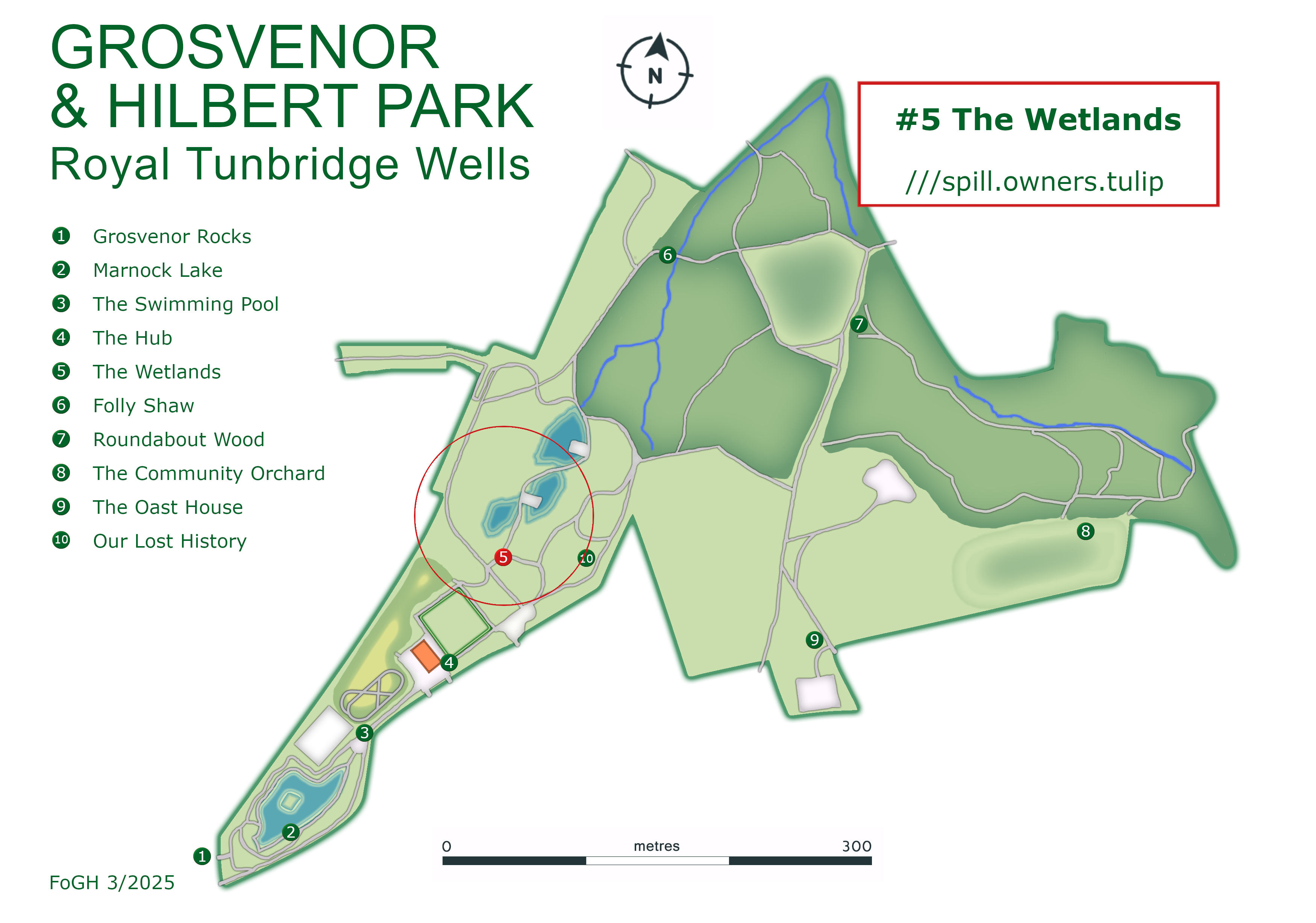
The Wetlands
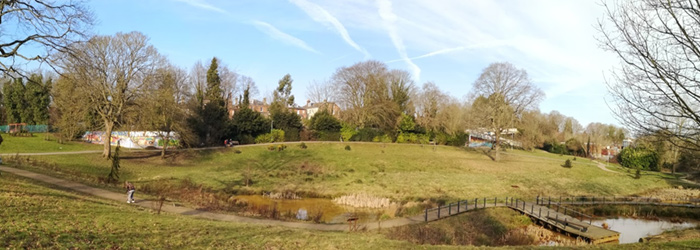
This naturally wet area was redeveloped as part of the 2015 Heritage Lottery funded regeneration. It is now a wetland with three ponds, a boardwalk and dipping platforms. Around the wetland, specimen conifers were planted in partnership with Bedgebury Pinetum. This reflects the original 1889 design, as conifers and arboretums were hugely fashionable at the time.
The smallest pond is more seasonal, sometimes drying out in summer. One is particularly noticeable for its murky brown colour, but it's not polluted - the water comes from a chalybeate or iron rich spring, like the water in the Pantiles. The largest pond is filled by a different spring, with clear water, and they all drain into a stream which flows towards Connaught Park.
The wetland area is managed by Kent High Weald Partnership (KHWP), a not-for-profit organisation which manages nature reserve in the Tunbridge Wells Borough. They organise practical volunteer days across nature reserves and green spaces in the borough, as well as activities for families and young people.
Just For Kids
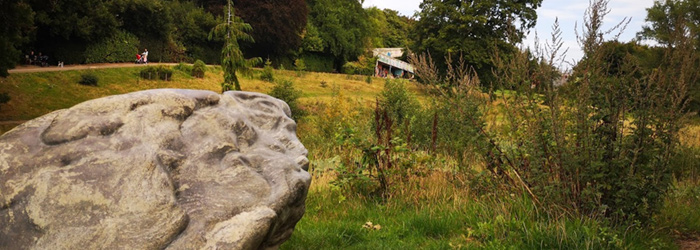
Feel the big smooth stone, how does if feel? How is it different to the other two stones?
If you are following the 'brass-rubbing' trail you'll find two near here: there's a fir cone by the railway bridge and a frog on the path by the bottom pond.
Wetlands: Nature
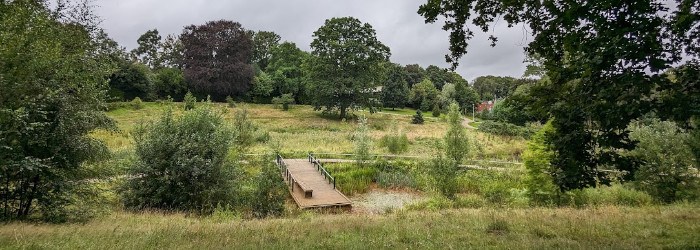
There's a host of wildlife to be found in and around the wetland ponds.
You often see mallards here and moorhens breed during the summer. On a good year there can be one family nesting on each pond. Frogs and newts come to breed in spring - look out for frogspawn in early spring. During summer you may spot colourful dragonflies (particularly common darters, broad-bodied chasers and emperor dragonflies) and damselflies (large red, azure, blue-tailed and common blue are often seen).
On the water surface you'll see pond skaters and whirligig beetles. Many more creatures live beneath the surface - pond dipping events in spring and summer find newts, sticklebacks, dragonfly, damselfly, caddisfly and mayfly larvae, water boatman, water and saucer beetles, as well as daphnia and water lice.
Before The Wetlands
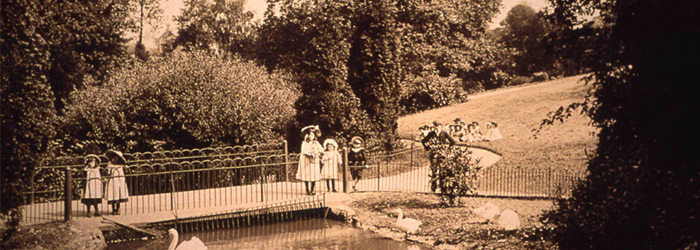
This seems to be a naturally wet area, with 19th century maps showing a spring or a stream. When John Stone-Wigg donated 4 acres to start Grosvenor Recreation Ground, the conveyance plan shows a stream.
Robert Marnock used the stream in his 1889 design and the area was laid out as two Lower Lakes, divided by a bridge and a weir. There were ornamental iron railings around the lakes and specimen trees and conifers were planted in the surrounding area.
The Lower Lakes gradually silted up and they were filled in during 1934, becoming a play area. In the 1970s the natural springs reappeared and this area returned to its more natural state as a 'wet flush', so it once again became a water-based feature. The Heritage Lottery regeneration took advantage of the springs in this naturally wet area to form the three pools here now.
Art Around The Wetlands
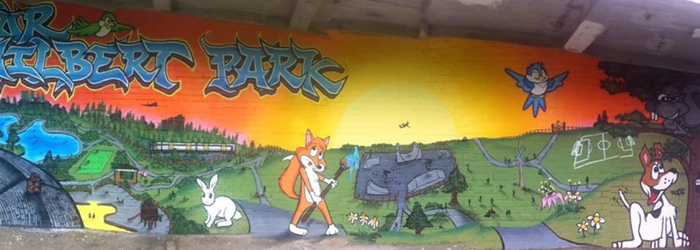
Street Art walls
These colourful features can be found on the path around the wetland and under the zigzag railway bridge. These form an ever-changing colourful feature, with the occasional large-scale mural, as well as smaller artworks.
Zephyr
The three carved stones at the entrance to the wetland is an art installation called Zephyr - the name refers to a warm light westerly wind. They are carved from gneiss, which is a foliated metamorphic rock, with a banded appearance and texture. Sculptor Richard Perry held a workshop in the Hub so locals could express what they loved about the park. His carving emphasises the natural markings in the stone and is inspired by flowing shapes representing the water, wind through the trees and rolling nature of the park.
This is another art installation placed along the cycle path, which are funded by contributions from housing developers.
What Next: Folly Shaw
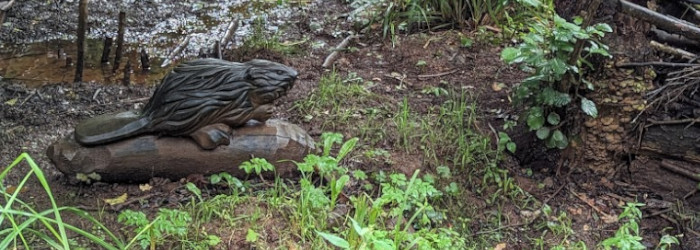
If you came along the 'high way' continue along the path until you reach the turning. If you came across the boardwalk turn up the hill to the path.
